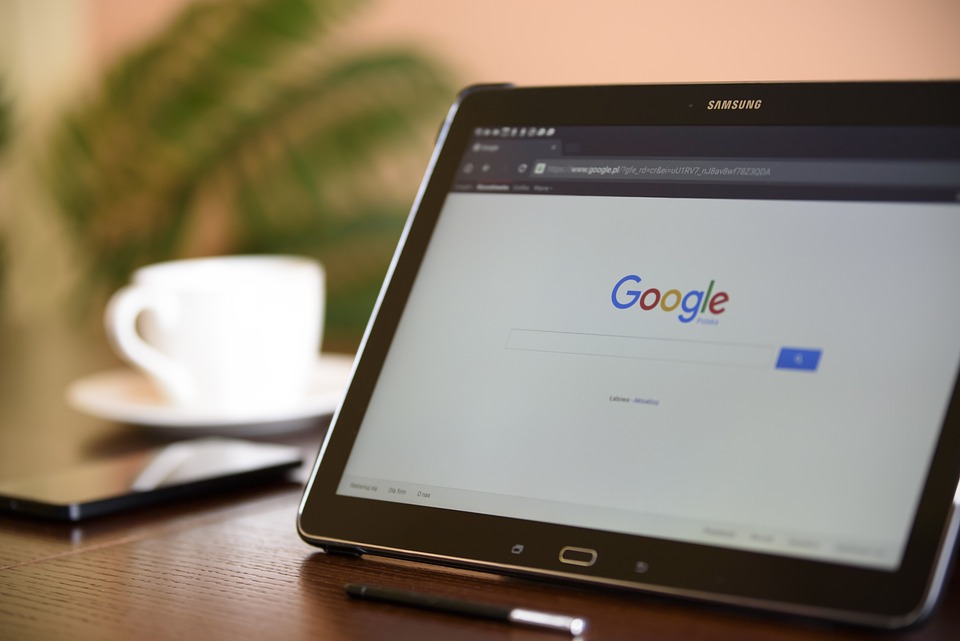Ease of use and the utility, not the visual plan, decide the achievement or disappointment of a site. Since the guest of the page is the main individual who taps the mouse and consequently chooses everything, client driven plan has turned into a standard methodology for fruitful and benefit situated website architecture. All things considered, in the event that clients can’t utilize an element, it should not exist.
We won’t talk about the plan execution subtleties (for example where the pursuit box ought to be set) as it has proactively been finished in various articles; rather we center around the primary standards, heuristics and approaches for powerful website architecture — approaches which, utilized appropriately, can prompt more modern plan choices and work on the most common way of seeing introduced data.
Kindly notification that you may be keen on the ease of use related articles we’ve distributed previously:
rinciples Of Good Web composition And Compelling Website composition Rules #
To utilize the standards appropriately we first need to comprehend how clients interface with sites, how they think and what are the fundamental examples of clients’ way of behaving.
Do Clients’ Thought process? #
Essentially, clients’ propensities Online aren’t that unique in relation to clients’ propensities in a store. Guests look at each new page, examine a portion of the text, and snap on the main connection that gets their advantage or enigmatically looks like what they’re searching for. Truth be told, there are enormous pieces of the page they don’t check out.
Most clients look for something intriguing (or helpful) and interactive; when a few promising competitors are found, clients click. In the event that the new page doesn’t measure up to clients’ assumptions, the Back button is clicked and the pursuit cycle is proceeded.
Clients value quality and believability. In the event that a page furnishes clients with great substance, they will think twice about satisfied with commercials and the plan of the site. This is the justification for why not-that-very much planned sites with excellent substance gain a ton of traffic over years. Content is a higher priority than the plan which upholds it.
Clients don’t peruse, they examine. Examining a site page, clients look for a few fixed places or anchors which would direct them through the substance of the page.
Website architecture Rules
Clients don’t peruse, they examine. Notice how “hot” regions sudden in sentences. This is ordinary for the filtering system.
Web clients are fretful and demand moment delight. Exceptionally straightforward rule: In the event that a site can’t live up to clients’ assumptions, then creator neglected to finish his occupation appropriately and the organization loses cash. The higher is the mental burden and the less instinctive is the route, the more willing are clients to leave the site and quest for choices. [JN/DWU]
Clients don’t pursue ideal decisions. Clients don’t look for the speediest method for finding the data they’re searching for. Neither do they filter website page in a direct design, going consecutively starting with one webpage segment then onto the next one. Rather clients satisfice; they pick the primary sensible choice. When they find a connection that seems like it could prompt the objective, there is a generally excellent possibility that it will be quickly clicked. Upgrading is difficult, and it requires a long investment. Satisficing is more productive.
Standards Of Viable Website composition
Consecutive perusing stream doesn’t work in the Internet. Right screen capture on the picture at the base portrays the sweep way of a given page.
Clients follow their instinct. Much of the time clients wade through as opposed to perusing the data a fashioner has given. As indicated by Steve Krug, the fundamental justification behind that will be that clients couldn’t care less. “Assuming we track down something that works, we stick to it. It doesn’t make any difference to us on the off chance that we comprehend how things work, as long as we can utilize them. In the event that your crowd will carry on like you’re planning bulletin, plan extraordinary announcements.”
Clients need to have control. Clients need to have the option to control their program and depend on the predictable information show all through the site. For example they don’t need new windows springing up startlingly and they need to have the option to get back with a “Back”- button to the site they’ve been previously: in this way it’s a decent practice to never open connections in new program windows.
- Try not to Make Clients Think #
As indicated by Krug’s most memorable law of convenience, the page ought to be self-evident and plain as day. While you’re making a site, your responsibility is to dispose of the question marks — the choices clients need to make deliberately, taking into account masters, cons and options.
On the off chance that the route and site design aren’t natural, the quantity of question marks develops and makes it harder for clients to understand how the framework functions and how to get from point A to point B. An unmistakable design, moderate visual signs and effectively conspicuous connections can assist clients with tracking down their way to their point.
great web architecture test
We should investigate a model. Beyondis.co.uk professes to be “past channels, past items, past circulation”. What’s the significance here? Since clients will more often than not investigate sites as indicated by the “F”- design, these three assertions would be the main components clients will see on the page whenever it is stacked.
Albeit the actual plan is basic and instinctive, to comprehend what the page is about the client needs to look for the response. This is the thing a superfluous question mark is. It’s architect’s undertaking to ensure that the quantity of question marks is near 0. The visual clarification is put on the right hand side. Simply trading the two blocks would increment ease of use.
Website composition Rules
ExpressionEngine utilizes exactly the same design like Beyondis, yet stays away from superfluous question marks. Moreover, the trademark becomes practical as clients are furnished with choices to attempt the help and download the free adaptation.
By decreasing mental burden you make it more straightforward for guests to get a handle on the thought behind the framework. Whenever you’ve accomplished this, you can convey why the framework is valuable and the way in which clients can profit from it. Individuals won’t utilize your site on the off chance that they can’t track down their strategy for getting around it.
- Try not to Waste Clients’ Understanding #
In each undertaking when you will offer your guests some assistance or device, attempt to keep your client necessities negligible. The less activity is expected from clients to test a help, the more probable an irregular guest is to really give it a shot. First-time guests will play with the help, not filling long web structures for a record they may in all likelihood never use ever again. Allow clients to investigate the site and find your administrations without compelling them into sharing confidential information. It’s not sensible to drive clients to enter an email address to test the element.
As Ryan Vocalist — the engineer of the 37Signals group — states, clients would likely be anxious to give an email address on the off chance that they were requested it after they’d seen the element work, so they had some thought of what they planned to receive consequently.
Screen capture
Stikkit is an ideal model for an easy to understand administration which requires barely anything from the guest which is unpretentious and consoling. Furthermore, that is the very thing you believe your clients should feel on your site.
Screen capture
Clearly, Bug requires more. Anyway the enlistment should be possible in under 30 seconds — as the structure has level direction, the client doesn’t actually have to look over the page.
In a perfect world eliminate all boundaries, don’t need memberships or enlistments first. A client enrollment alone is enough of an obstacle to client route to eliminate approaching traffic.
- Figure out how To Concentrate #
As sites give both static and dynamic substance, a few parts of the UI stand out more than others do. Clearly, pictures are more attractive than the message — similarly as the sentences set apart as striking are more alluring than plain message.
The natural eye is a profoundly non-straight gadget, and web-clients can immediately perceive edges, examples and movements. For this reason video-based commercials are very irritating and diverting, yet according to the showcasing point of view they impeccably finish the work of catching clients’ consideration.
Enso
Adapted impeccably utilizes the rule of concentration. The main component which is straightforwardly noticeable to the clients is “free” which works alluring and engaging, yet at the same time quiet and absolutely useful. Unpretentious clues furnish clients with enough data of how to see as more about the “free” item.
Concentrating to explicit region of the site with a moderate utilization of visual components can assist your guests with getting from point A to point B without considering how it really should be finished. The less question marks guests have, the better feeling of direction they have and the more trust they can create towards the organization the site addresses. As such: the less reasoning necessities to occur in the background, the better is the client experience which is the point of ease of use in any case.
- Take a stab at Element Openness #
Present day website architectures are normally censured because of their methodology of directing clients with outwardly engaging 1-2-3-done-steps, enormous buttons with enhanced visualizations and so on. Yet, according to the plan point of view these components really are definitely not something terrible. Running against the norm, such rules are incredibly successful as they lead the guests through the site content in an extremely basic and easy to understand way.
Screen capture
Dibusoft joins visual allure with clear site structure. The site has 9 principal route choices which are apparent at the main look. However, the selection of varieties may be excessively light.
Allowing the client to see plainly which capabilities are accessible is a key guideline of effective UI plan. It doesn’t exactly make any difference how this is accomplished. What makes a difference is that the substance is surely known and guests feel OK with the manner in which they connect with the framework.
- Utilize Powerful Composition #
As the Internet is not quite the same as print, it’s important to change the composing style to clients’ inclinations and perusing propensities. Special composing will not be perused. Long text blocks without pictures and catchphrases set apart in strong or italics will be skipped. Misrepresented language will be overlooked.
Talk business. Stay away from adorable or astute names, promoting actuated names, organization explicit names, and new specialized names. For example, on the off chance that you depict a help and believe clients should make a record, “join” is better than “begin now!” which is again better than “investigate our administrations”.
Screen capture
Eleven2.com comes to the heart of the matter. No adorable words, no overstated assertions. Rather a cost: exactly the thing guests are searching for.
An ideal answer for viable composing is to
utilize short and brief expressions (come direct as fast as could be expected),
utilize readable format (order the substance, utilize numerous heading levels, utilize visual components and bulleted records what break the progression of uniform text blocks),
utilize plain and objective language (an advancement doesn’t have to seem like notice; give your clients some sensible and objective motivation behind why they ought to utilize your administration or remain on your site)
- Make progress toward Straightforwardness #
The “keep it basic”- guideline (KIS) ought to be the essential objective of site plan. Clients are seldom on a site to partake in the plan; besides, by and large they are searching for the data regardless of the plan. Make progress toward effortlessness rather than intricacy.
According to the guests’ perspective, the best site configuration is an unadulterated text, with practically no ads or further satisfied blocks matching the very question guests utilized or the substance they’ve been searching for. This is one reason why an easy to understand print-rendition of pages is fundamental for good client experience.
Screen capture
Finch obviously presents the data about the site and provides guests with a selection of choices without congestion them with superfluous substance.
- Try not to Fear The Blank area #
As a matter of fact misjudging the significance of blank area is truly hard. Besides the fact that it assists with decreasing the mental burden for the guests, however it makes it conceivable to see the data introduced on the screen. At the point when another guest moves toward a plan format, the principal thing he/she attempts to do is to examine the page and gap the substance region into edible snippets of data.
Complex designs are more earnestly to peruse, filter, break down and work with. In the event that you have the decision between isolating two plan sections by a noticeable line or by some whitespace, utilizing the whitespace solution is generally better. Various leveled structures diminish intricacy (Simon’s Regulation): the better you figure out how to give clients a feeling of visual ordered progression, the more straightforward your substance will be to see.
Screen capture
Void area is great. Cameron.io involves void area as an essential plan component. The outcome is a well-searchable format which gives the substance a ruling position it merits.
- Discuss Really With A “Noticeable Language” #
In his papers on powerful visual correspondence, Aaron Marcus states three basic standards engaged with the utilization of the supposed “noticeable language” — the substance clients see on a screen.
Coordinate: furnish the client with a reasonable and predictable calculated structure. Consistency, screen format, connections and traversability are significant ideas of association. Similar shows and rules ought to be applied to all components.
Conserve: do the most with minimal measure of signs and visual components. Four significant focuses to be thought of: straightforwardness, clearness, peculiarity, and accentuation. Effortlessness incorporates just the components that are generally significant for correspondence. Lucidity: all parts ought to be planned so their significance isn’t uncertain. Uniqueness: the significant properties of the fundamental components ought to be discernable. Accentuation: the main components ought to be effortlessly seen.
Impart: match the show to the capacities of the client. The UI should keep in balance decipherability, coherence, typography, imagery, various perspectives, and variety or surface to effectively convey. Use max. 3 typefaces in a limit of 3 point sizes — a limit of 18 words or 50-80 characters for each line of text.
- Shows Are Our Companions #
Regular plan of website components doesn’t bring about an exhausting site. As a matter of fact, shows are exceptionally helpful as they decrease the expectation to learn and adapt, the need to sort out how things work. For example, it would be a convenience bad dream in the event that all sites had different visual show of RSS-channels. That is not that not the same as our standard life where we will generally become accustomed to essential standards of how we coordinate information (envelopes) or do shopping (situation of items).
With shows you can acquire clients’ certainty, trust, dependability and demonstrate your validity. Follow clients’ assumptions — comprehend what they’re anticipating from a site route, text structure, search position and so on.
An ordinary model from convenience meetings is to decipher the page in Japanese (expecting your web clients don’t know Japanese, for example with Babelfish) and furnish your convenience analyzers with an undertaking to track down something in the page of various language. On the off chance that shows are very much applied, clients will actually want to accomplish a not-too-explicit goal, regardless of whether they can’t grasp an expression of it.
Steve Krug recommends that it’s smarter to develop just when you realize you truly have a superior thought, however take benefits of shows when you don’t.
- Test Early, Test Frequently #
This supposed TETO-rule ought to be applied to each website architecture project as convenience tests frequently give pivotal bits of knowledge into huge issues and issues connected with a given format.
Test not past the point of no return, not excessively little and not for some unacceptable reasons. In the last option case it’s important to comprehend that most plan choices are neighborhood; that implies that you can’t generally answer whether some format is superior to the next one as the need might arise to break down it according to an unmistakable perspective (taking into account necessities, partners, financial plan and so forth.).
A few significant focuses to remember:
as per Steve Krug, testing one client is 100 percent better than testing none and testing one client right off the bat in the venture is superior to testing 50 close to the end. Accoring to Boehm’s most memorable regulation, blunders are generally continuous during necessities and plan exercises and are the more costly the later they are eliminated.
testing is an iterative cycle. That implies that you plan something, test it, fix it and afterward test it once more. There may be issues which haven’t been found during the primary round as clients were for all intents and purposes impeded by different issues.
convenience tests generally produce helpful outcomes. It is possible that you’ll be highlighted the issues you have or you’ll be highlighted the shortfall of significant plan blemishes which is in the two cases a helpful knowledge for your undertaking.
as per Weinberg’s regulation, a designer is unsatisfactory to test their code. This holds for originators also. After you’ve dealt with a site for quite a long time, you can’t notice it according to a new point of view any longer. You know about the way things are assembled and consequently you know precisely the way that it works — you have the insight free analyzers and guests of your site wouldn’t have.
Main concern: on the off chance that you need an incredible site, you must test.




